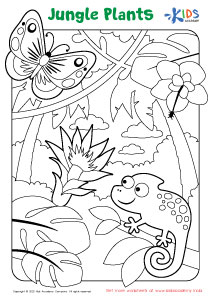3-LS1-1 3. Life Cycles and Traits worksheets With Answers for Grade 3
2 filtered results
-
From - To
Unlock the wonders of life cycles and traits with our "3-LS1-1 Life Cycles and Traits Worksheets" designed specifically for Grade 3 students! These engaging worksheets provide a comprehensive exploration of the key concepts in biology, helping young learners understand the stages of life for various organisms and the traits that define them. Each worksheet includes clear instructions and thought-provoking questions, along with answer keys to facilitate learning and self-assessment. Perfect for classroom activities or home study, these worksheets foster curiosity and pave the way for deeper comprehension in science. Dive into the fascinating world of life science today!


Life Cycle of a Plant Worksheet


Life Cycle of Butterfly Worksheet
Teachng students about standard 3-LS1-1, which focuses on life cycles and traits, is essential for several reasons. First, understanding life cycles helps children grasp the concept of growth and development in living organisms, including plants and animals. This knowledge lays the foundation for critical thinking about how life is interconnected.
Moreover, learning about traits helps students to recognize the diversity of organisms and understand how characteristics are passed from one generation to the next. Such topics promote curiosity about the natural world and can inspire future careers in science and ecology.
For parents and teachers, encouraging exploration around this standard fosters a child’s observation skills and ability to ask questions. Engaging in conversations about life stages—like metamorphosis in butterflies or the growth of plants—can stimulate discussions at home or in the classroom.
Additionally, this subject has implications for environmental awareness, helping children appreciate the importance of protecting various species and their habitats. Overall, teaching life cycles and traits nourishes a child's sense of wonder, respect for nature, and grasp of biology, preparing them for more complex scientific concepts later on.
 Assign to My Students
Assign to My Students















